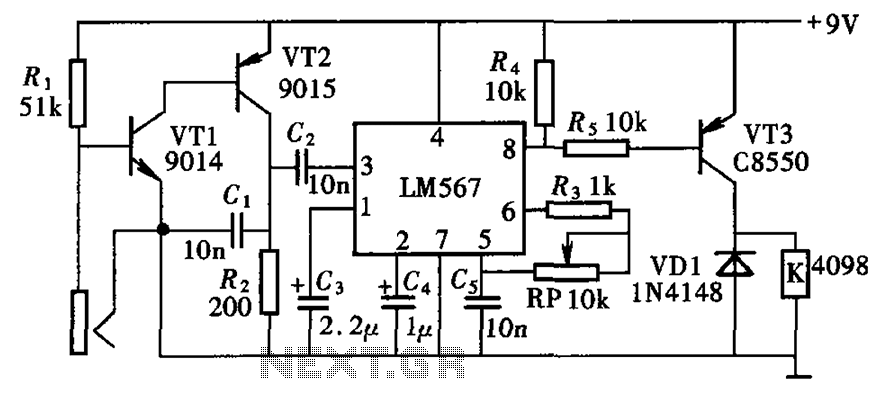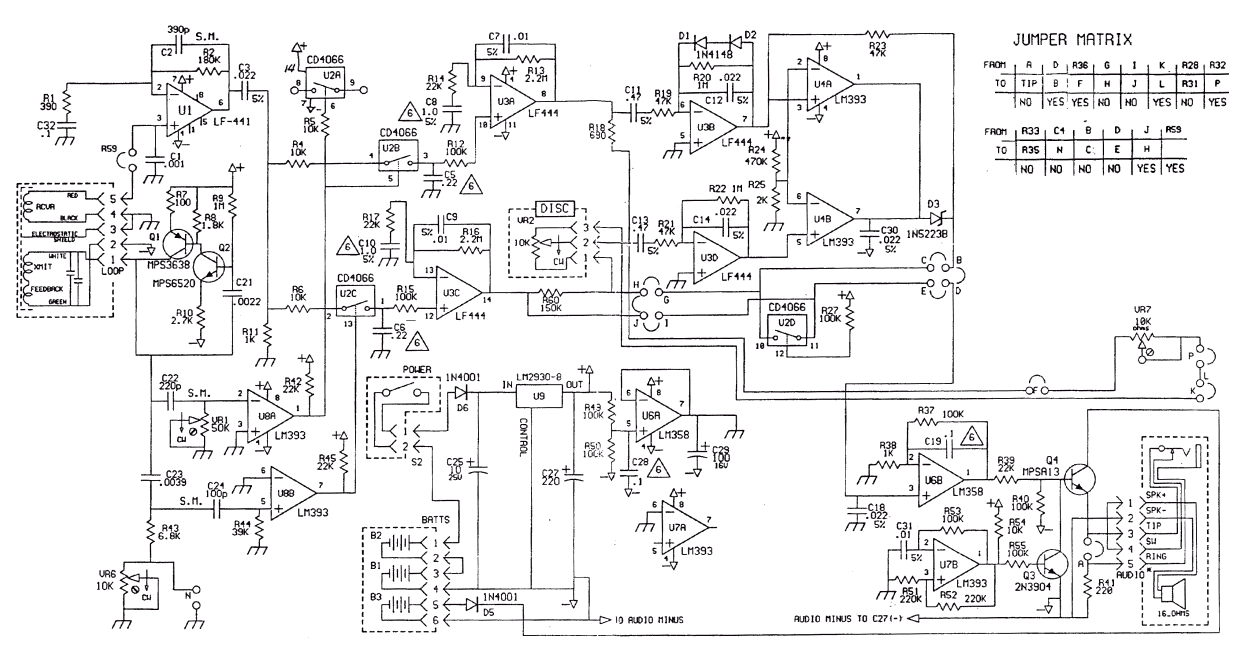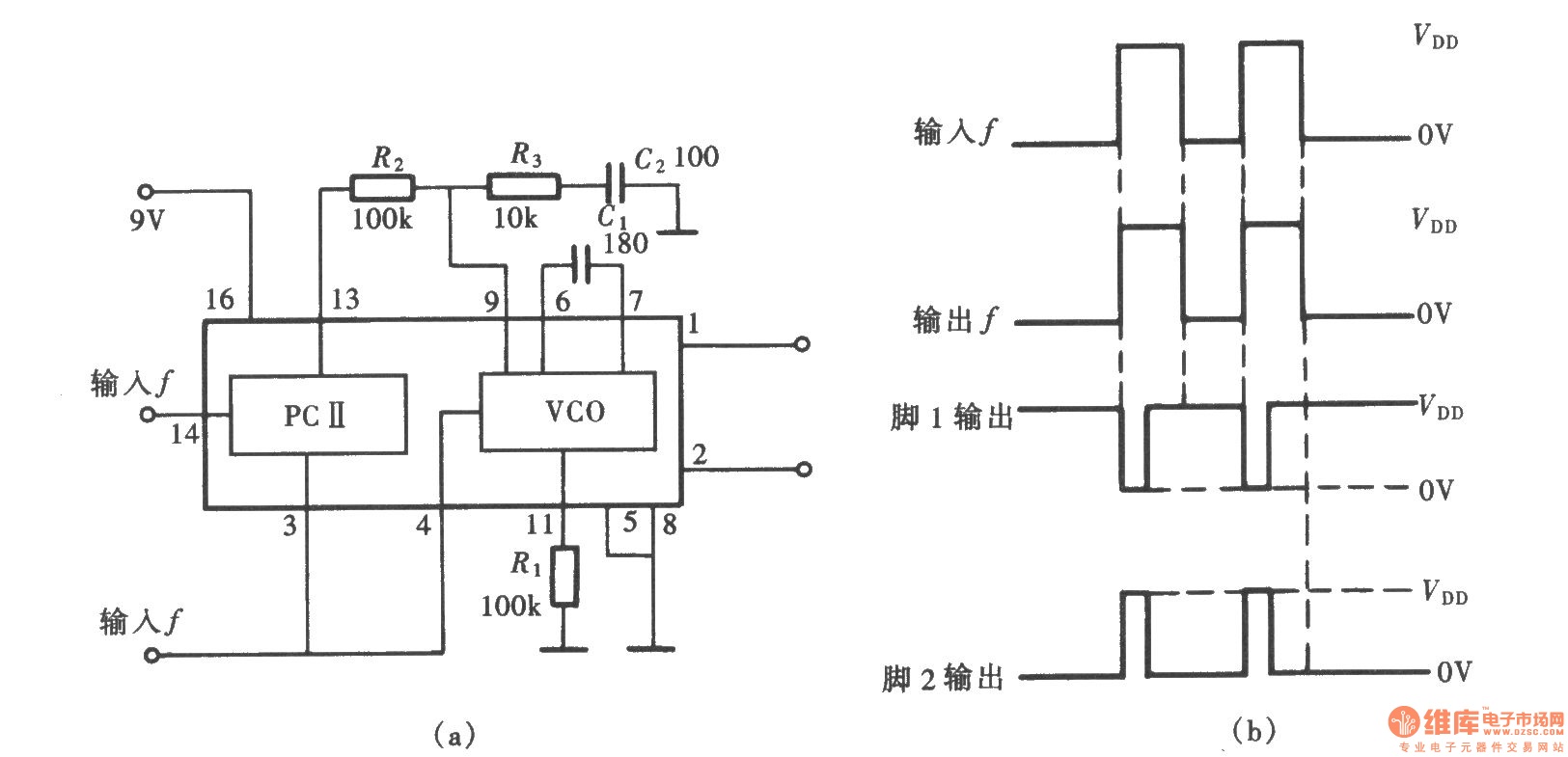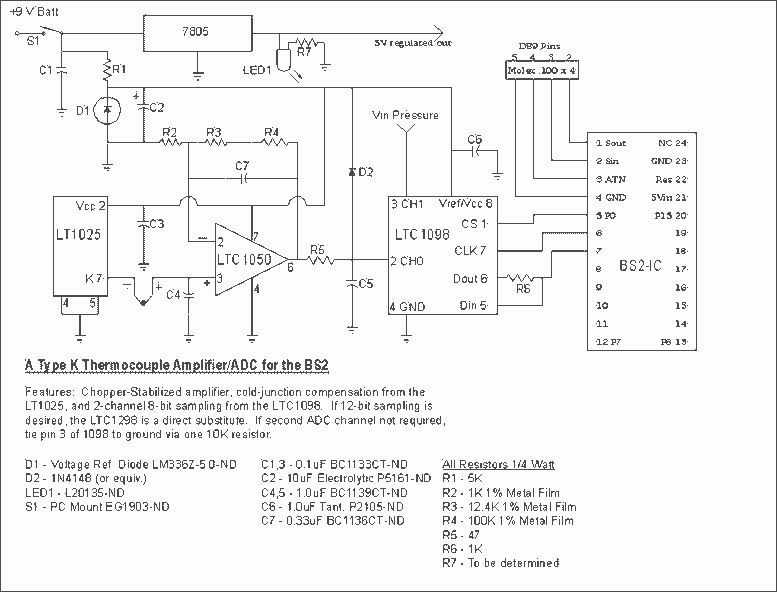
Frequency electronic locks LM567 schematic

The electronic lock circuit is based on the frequency characteristics of the LM567 audio decoder. This circuit utilizes the audio decoding feature of the LM567, which outputs a low signal when the input signal frequency matches the oscillation frequency of its internal voltage-controlled oscillator (VCO). The circuit comprises an audio frequency oscillator, an output frequency decoder, and a driver circuit.
The electronic lock circuit leverages the LM567 audio decoder's ability to detect specific frequencies, making it suitable for applications where secure access is required based on audio signals. The operation begins with an audio frequency oscillator that generates a specific frequency signal. This signal is fed into the LM567, which is configured to recognize that particular frequency.
When the input audio signal frequency aligns with the internal VCO's oscillation frequency, the LM567 produces a low output signal. This output can be utilized to trigger subsequent stages of the electronic lock mechanism. The output frequency decoder processes the signal from the LM567, ensuring that only the correct frequency will activate the lock.
Following the decoder, a driver circuit is employed to control the locking mechanism, which may include a relay or a transistor switch that physically engages or disengages the lock. The design of this circuit ensures that unauthorized frequencies will not trigger the lock, thus enhancing security.
Overall, the integration of the LM567 audio decoder into the electronic lock circuit provides a reliable method for frequency-based access control, with the potential for customization to accommodate various frequencies as needed for different applications. As shown in the frequency of electronic locks by the PLL audio decoder LM567 composition, the electronic lock circuit uses the LM567 audio decoding characteristic, that is, whe n it is consistent with the input signal frequency and the oscillation frequency of the internal VCO, it will output low. Circuit by an audio frequency oscillator, the output frequency decoder and driver circuit.
The electronic lock circuit leverages the LM567 audio decoder's ability to detect specific frequencies, making it suitable for applications where secure access is required based on audio signals. The operation begins with an audio frequency oscillator that generates a specific frequency signal. This signal is fed into the LM567, which is configured to recognize that particular frequency.
When the input audio signal frequency aligns with the internal VCO's oscillation frequency, the LM567 produces a low output signal. This output can be utilized to trigger subsequent stages of the electronic lock mechanism. The output frequency decoder processes the signal from the LM567, ensuring that only the correct frequency will activate the lock.
Following the decoder, a driver circuit is employed to control the locking mechanism, which may include a relay or a transistor switch that physically engages or disengages the lock. The design of this circuit ensures that unauthorized frequencies will not trigger the lock, thus enhancing security.
Overall, the integration of the LM567 audio decoder into the electronic lock circuit provides a reliable method for frequency-based access control, with the potential for customization to accommodate various frequencies as needed for different applications. As shown in the frequency of electronic locks by the PLL audio decoder LM567 composition, the electronic lock circuit uses the LM567 audio decoding characteristic, that is, whe n it is consistent with the input signal frequency and the oscillation frequency of the internal VCO, it will output low. Circuit by an audio frequency oscillator, the output frequency decoder and driver circuit.





